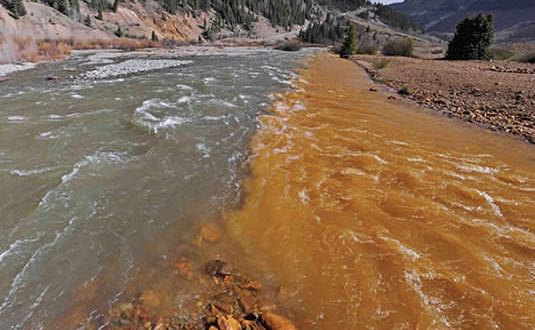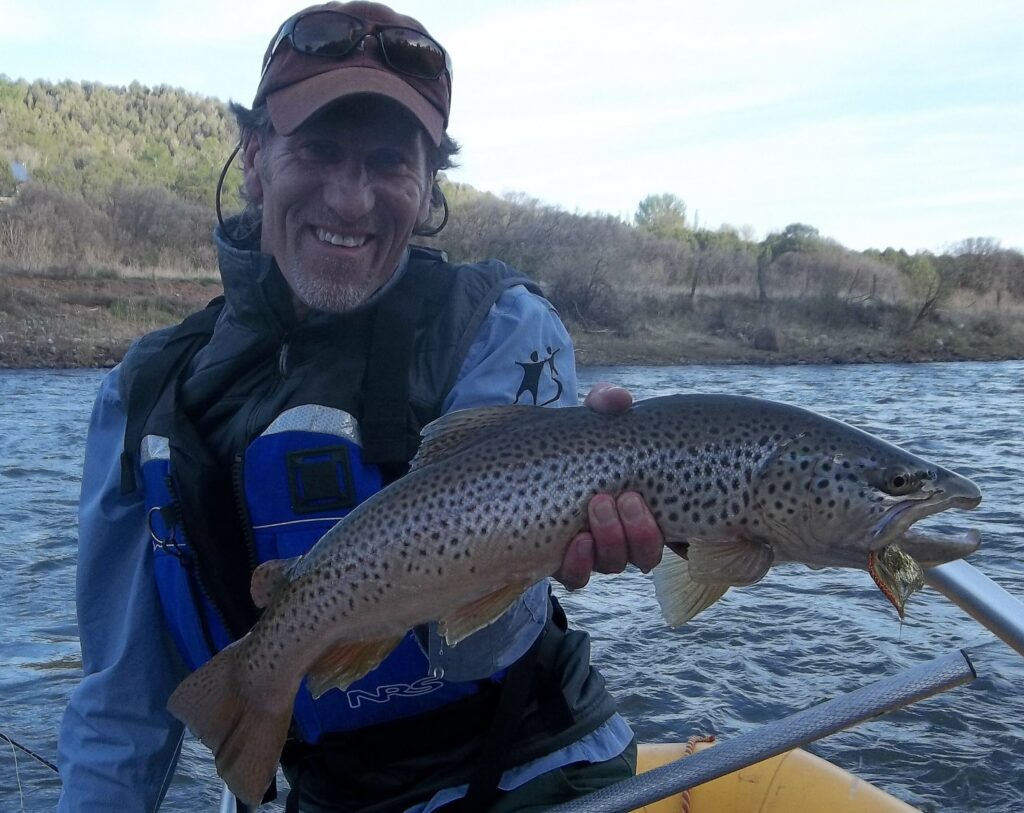By Ty Churchwell
No one in Durango nor Silverton, Colo., will ever forget Aug. 5, 2015 — the day of the Gold King mine spill that sent 3 million gallons of ugly, toxic mine water down the Animas River in southwest part of the state. To say the accident was highly visible is an understatement. In today’s digital world, photos of the orange plume were immediately plastered all over the internet and highlighted in news stories from Denver to New York to China and Tel Aviv.
Thankfully, there was no fish kill that day. In fact, the event was more of a media spectacle than a true environmental disaster. For some, after the plume passed, that was the end of the story. For others, it was just the beginning of the next phase of the Animas watershed’s history with mining. In the wake of the spill, 48 mines in tributaries of the upper Animas River were listed as Superfund sites and a major federal cleanup has commenced.

Fishing prospects
For locals, we often view the Animas as the tale of two rivers. In the lower part of the Animas closer to Durango – 50 miles downstream from the mines – a marvelous, world-class trout fishery exists. This includes a reach of Gold Medal trout water right in downtown Durango, and dozens of miles of publicly-fishable water through Southern Ute tribal lands. The lower Animas is notorious for massive, sculpin-eating browns and caddis fly swarms. It is this lower section of the Animas that is famous as a fishery.

The upper Animas, however, struggles to support a vibrant trout fishery — having been impacted by mineral extraction almost from the day miners arrived in the 1880s. This isn’t to say there are no trout: there are. Just five miles from Silverton, in an Animas tributary not heavily mined, a remarkable native Colorado River cutthroat trout fishery survived mining and persists to this day. In the Animas mainstem near Silverton—above where a heavily-impacted tributary dumps heavy metals into the river — hungry, high mountain brookies abound and summer mayfly hatches are well-known.
Next steps
One of the first tasks of the Superfund cleanup process was to establish a baseline of aquatic life conditions in the upper watershed as a measure of impact and potential future remediation success. Basically, this consists of fishery surveys and habitat evaluation to determine the presence or absence of trout and the bugs they eat. In total, there are roughly 60 miles of currently non-existent or scant trout fisheries to be recovered through future mine remediation projects and water quality improvements.

Sixty miles of trout water … that’s no small number. But that’s not all. Improved water quality throughout the upper watershed will create conditions supportive of a more diverse species distribution. It’s important to note that brook trout are much more tolerant of poor water quality than other trout species. Someday soon, with completion of future mine remediation projects, rainbow, brown and possibly cutthroat trout will occupy reaches of the Animas River that haven’t held fish for decades.
The prospect of it excites local anglers who too often forego a day in the upper Animas watershed, choosing instead to fish nearby waters not impacted by acid mine drainage.
There are also other benefits besides angler opportunities. If there’s one thing most small, western mountain towns have is a fly shop. That’s not the case for Silverton. With improved water quality comes economic opportunity through fishing and river recreation. For those of us fighting for the health of the Animas fishery, we will celebrate the day a fly shop opens in Silverton — for that will be an indicator that our years-long efforts have been successful.
Fishing tips for the Animas
The Animas River is a freestone river, with no storage reservoir and dam to impede natural flow. As such, spring runoff takes the Animas out of service for most of May and June with high flows and dirty snowmelt. Prior to runoff, however, caddis are developing and becoming ready for their annual hatch. In winter and early spring, a Buckskin caddis pupa is a local’s favorite. Beginning around the 4th of July, runoff has concluded and summer hatches get underway. Terrestrials become a prevalent choice. Hoppers are always good, but rubber-legged terrestrials often tempt big browns to strike. Favorites include a Turk’s Tarantula or Madam X. Try lifting your rod tip and skittering your fly across the water. This often lures lazy browns off the bottom to investigate and bite.
Ty Churchwell is the southwest Colorado coordinator for Trout Unlimited.



